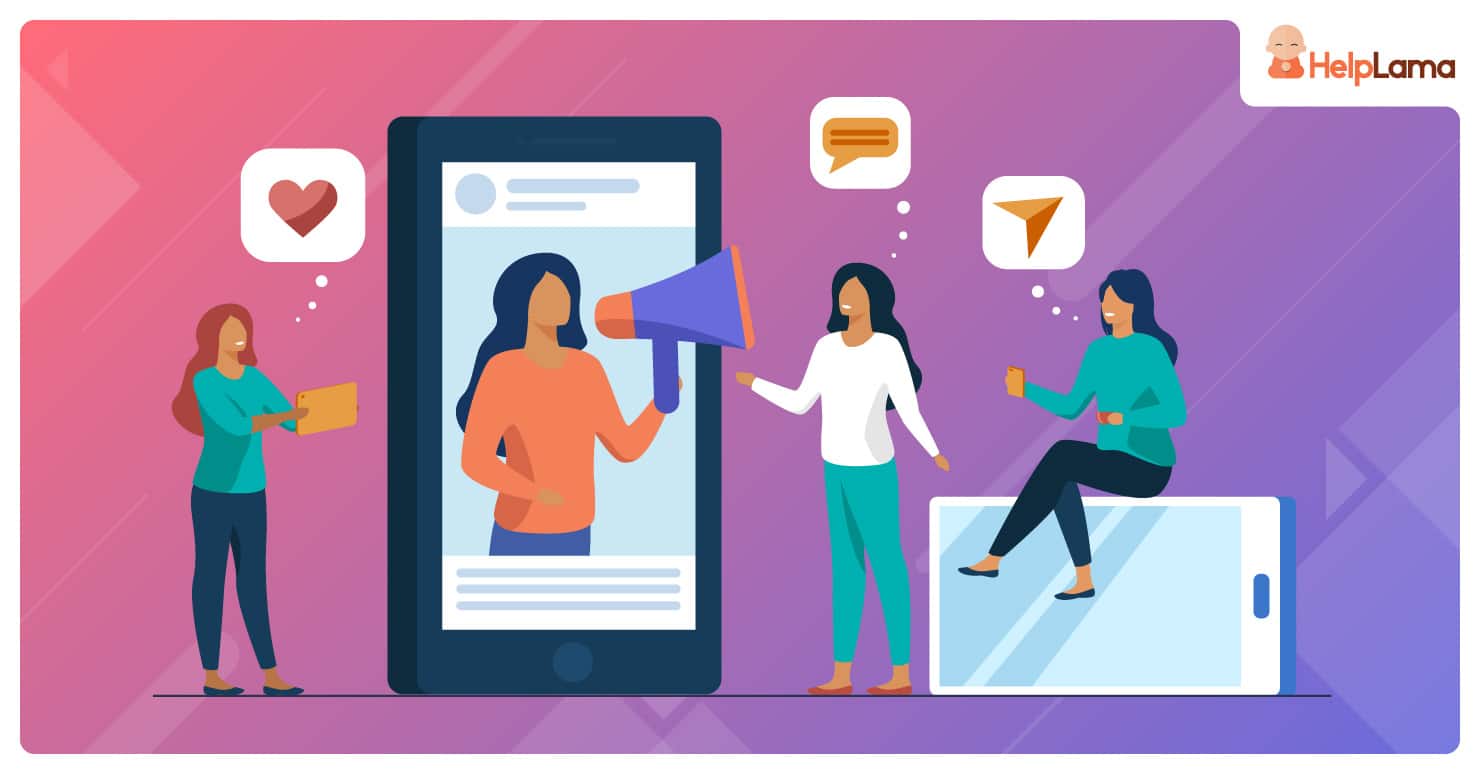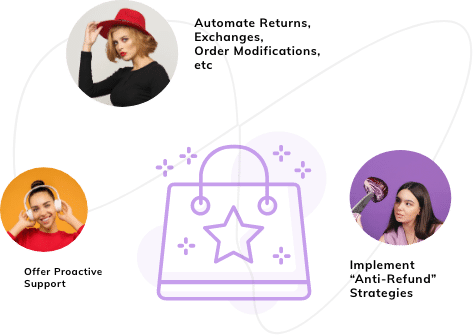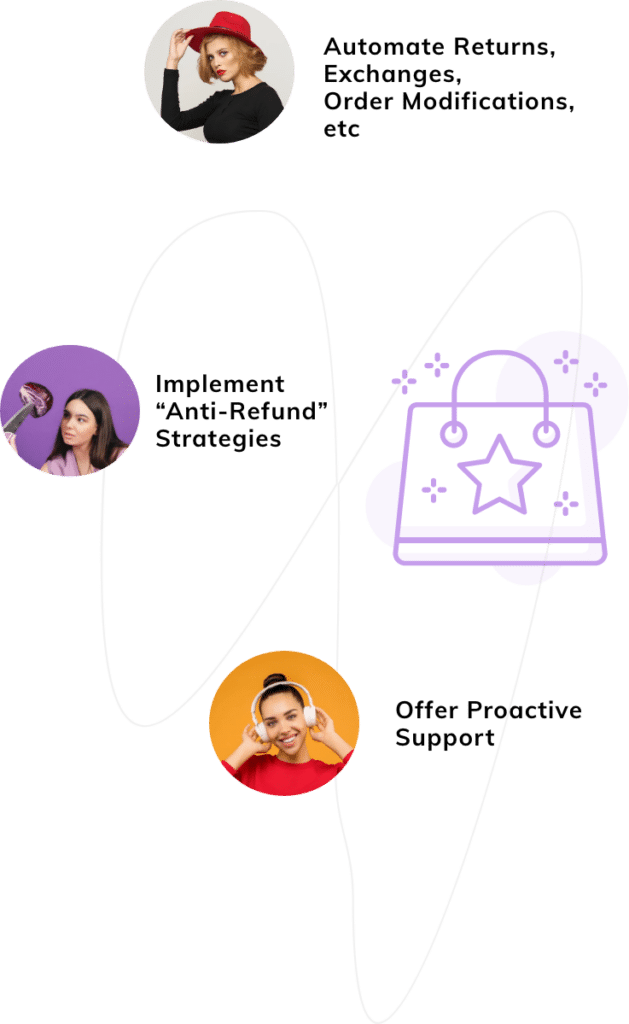Last Updated: April 2024
Additionally, the increasing use of the internet and social media has drastically changed the landscape of word-of-mouth marketing. In fact, studies show that word of mouth is the primary factor in 20% to 50% of all purchasing decisions.
So, word-of-mouth can be a vital strategy to incorporate into your marketing funnel to drive revenue and brand awareness for your company.
In this guide, we will cover the following:
- What is WOM Marketing? Its Importance
- Types of Word of Mouth Marketing
- Top 5 Examples of Word of Mouth Marketing
- How is WOM different from referral marketing?
- Impact of WOM Marketing on Consumer Behavior
- 7 Ways to Get More Word of Mouth Referrals?
- Pros and Cons of Word of Mouth Marketing
Why is Word of Mouth Marketing Important?
First, let’s know what exactly is word of mouth (WOM) marketing?
WOM marketing, or word-of-mouth marketing, is the process of actively encouraging and influencing Word-of-Mouth discussions in an organic way to promote a product, service, or brand.
Simply put, word of mouth marketing is when customers tell their friends, family, and others about a company’s product or service.
Marketers use it to generate interest in a product by encouraging people to talk about it. It’s a cost-effective way to get the word out about your business and products to online and offline communities. We have explained the detailed pros and cons of WOM marketing later in this post.
Word of Mouth Marketing Types
There are mainly four types of WOM marketing:
1. P2P Marketing
P2P marketing is a form of word-of-mouth marketing in which customers are encouraged to promote the product to other potential customers.
Long before social media, people have voiced their personal opinions about their favorite brands, products, and services.
Peer-to-peer marketing (P2P) is the future of reaching people as we become more connected and networked. Peer-to-peer (P2P) marketing encourages customers to recommend a product or service to friends or colleagues.
According to Mckinsey, consumers are twice as likely to make a purchase decision based on another consumer’s recommendation than on a paid advertisement.
Here’s how Uber uses P2P marketing:
The uber app encourages users to invite their peers. On the Uber app, each customer receives a unique referral code that they can share with their friends. When a new account is created using the referral code, both referrer and referred person receive a free Uber ride.
2. F2F Marketing
Face-to-face Marketing (F2F) is the act of communicating directly with potential customers in person.
Why consider F2F marketing in a digital world? According to research, face-to-face Marketing typically accounts for 50 to 80% of WOMM activity.
Face-to-face marketing is essential because it provides a completely different experience than online marketing. How?
In F2F marketing, you meet prospective customers, provide personalized service and address pain points and issues in person, increasing the likelihood of word of mouth and brand loyalty.
Additionally, it can allow you to convey your brand’s voice and beliefs on products and services.
3. UGC Marketing
User-generated content (UGC) refers to content created by consumers. Encouraging and using consumer-created content (photos, video, text, etc.) is referred to as user-generated content marketing.
You have to admit it – social proof is one of the best ways to earn consumer trust. That’s why 70% of consumers consider user reviews and ratings before they make a purchase.
Here’s a great example of Netflix using UGC to generate word-of-mouth:
Typically, in order to encourage user-generated content for upcoming premieres, Netflix uses hashtags in its social posts, usually the show’s title.
For Stranger things 2, Netflix used the hashtag #strangerthings2 in its posts.
The Result: Extensive promotion through content generated by people using the hashtag, over 2 million posts are there on Instagram for the hashtag.
Learn more about UGC here: Benefits of User-generated Content for Small Businesses.
4. Social Media Community Marketing
Social media can help your brand with a variety of things, one of the best is growing your audience through social media community marketing. This is a type of marketing in which word-of-mouth is generated through building communities on social media platforms.
In these communities, people tend to talk about brands on social media that provide relevant and valuable content.
With every repost, share, or retweet, Word-of-mouth marketing has the potential for massive reach.
To add to this, 74% of users rely upon social media to inform a purchasing decision.
Pro Tip: To start brand-related conversations across these social media communities, consider collaborating with micro-influencers in your niche.
Top 5 Examples of Word of Mouth Marketing
Here’s how major brands get customers talking with these brilliant word-of-mouth marketing campaigns:
1. Netflix
Netflix’s marketing campaigns over the years have proved how word-of-mouth is more powerful than paid ad campaigns because the growth is organic and the speed at which information spreads is incredible.
You’ve probably heard of Netflix’s show Squid Game, which has become one of the most popular topics of 2021. According to Netflix, Squid Game has over 111 million fans and a market penetration rate of 53.11 percent.
How did Netflix manage to pull this off?
By creating viral content and building a fan base that supports and shares viral content.
The result: Since the show’s debut, countless memes have flooded the feeds of every social media app, including Twitter, Facebook, Instagram, and TikTok. In fact, the #squidgame Instagram hashtag has over 1.6 million user-generated posts.
– Key takeaway:
Create a social media campaign that resonates with your target audience. You can increase your chances of going viral by using relevant hashtags, trending music, and themes.
2. Dropbox
Dropbox, a cloud storage company, saw its membership skyrocket by about 60% in 2010, thanks to an effective referral/ WOM strategy.
So how did Dropbox leverage word-of-mouth marketing?
Instead of the usual boring incentives like discount vouchers, Dropbox designed a referral program that gives away extra storage.
– Key takeaway:
Provide incentives to customers to encourage word of mouth. You can use your affiliate or referral program to promote word-of-mouth marketing by providing special offers or perks.
Furthermore, coupons and special discounts can be great ways to raise brand awareness or promote brand loyalty.
3. McDonald’s
In March 2010, McDonald’s launched a massively successful word-of-mouth campaign in China to boost sales of its McSpicy Wings.

The campaign: McDonald’s publicly stated that if one million Chinese people pledged their love for McSpicy Wings online, the company would give away free chicken wings for seven days at select restaurants.
- More than 2 million people signed the pledge
- McSpicy Wings sales increased by 10% to 30%
- 3 million videos views online and
- 180,000 shares
– Key takeaway:
Run giveaways and contests. For example, you can ask customers to share the user-generated content or the giveaway post on their social media pages. This way, you can get customers to interact with your brand along with generating organic traffic.
4. Forever21
As we mentioned earlier, User-generated content can be a great way to generate word of mouth for your brand.
And one of the best ways to collect UGC is – Branded hashtags.
Apparel giant Forever 21 encourages customers to share their personal style on Instagram by posting photos of their favorite outfits using the hashtag #F21xME.
The result: Nearly a million posts of user-generated content on Instagram showing off F21’s products.
Forever21 also launched a referral program, offering customers incentives such as coupons and discounts in exchange for recommending the brand to others:
– Key takeaway:
Hashtag feeds provide a quick and easy way to participate in conversations about your products. Begin hashtag contests and promote your business hashtag whenever you share a post on Instagram or Twitter, and your customers will most likely follow suit.
5. Coca-Cola
Coca-cola’s #shareacoke campaign encouraged customers to participate by sharing a personalized soda bottle with friends in person and on social media.
Coca-Cola even supported the campaign by hosting events where customers could design their own personalized Coke bottle.
Additionally, by labeling bottles with different names, people were more inclined to buy them for a friend or family member with a matching name. This worked perfectly with the #ShareaCoke hashtag, inspiring people to go on social media and share pictures of Cokes with their names or the names of people they knew.
– Key takeaway:
Create memorable campaigns. Building unique and engaging social media campaigns can help your company in attracting the attention of a large number of social media users looking for entertaining content to consume and share online.
How is WOM different from Referral Marketing?
It’s critical to understand the distinction between word of mouth and referral marketing when it comes to promoting your business.
Word-of-mouth marketing focuses on encouraging people to talk about a brand or product across various mediums in order to pique the interest of a new audience.
On the other hand, referral marketing is a strategy that encourages existing customers to refer their peers to become new customers, in exchange for incentives or rewards.
Similarity among both is – Existing customers are used as advocates in both referral marketing and word-of-mouth marketing to help promote their business. However, the main difference between the two is that word-of-mouth marketing is organic.
Impact of WOM Marketing on Consumer Behavior
WoM marketing is flexible and volatile, often based on personal impressions rather than researched data. However, some studies have quantified the effects of WOM on consumer behavior.
Here is a surprising statistic that shows how powerful WOM marketing can be:
A recommendation from a close friend or family member is up to 50x more likely to trigger a purchase.
Consider this: If you wanted to buy a Television 10 or 15 years ago, you would have talked to a bunch of people who were either experts or worked in electronic stores. This information trail could lead from you to your friends or family members, resulting in limited reach.
However, in this digital age, with user-generated testimonials and reviews being posted all over the internet, word-of-mouth marketing has limitless potential.
7 Ways to Get More Word of Mouth Referrals
Here are some suggestions for efficiently promoting your business through word-of-mouth marketing:
1. Offer Incentives
People are always more willing and likely to do something if they receive something of value in return.
And, 75% of consumers say they favor companies that offer rewards.

Set up an incentive program to encourage customers to recommend you to their social networks. Customers who refer your business should be rewarded monetarily through this program.
2. Provide Referral Bonuses
A referral program is a win-win situation for both businesses as well as consumers.
A well-executed referral program can significantly increase your word-of-mouth marketing. In fact, referrals influence up to 50% of all purchasing decisions.
3. Send Thankful Notes
Sending thank-you notes to your customers is a powerful way to show them how much you value their decision to do business with you. According to the results of this survey, 81 percent of respondents believe that sending thank you notes is an important way to express appreciation.
Have a look at this good example of a thank you note by Spotify:
Pro tip: Thank-you notes that are thoughtful and personalized promote brand loyalty and can bring customers back to your business.
4. Send Personalised Emails
The average email open rate for all industries is 21.33%.
Seems low, right?
But a personalized email message can boost your email open rate by a significant percentage – 71% of consumers say a personalized experience would influence their decision to open and read brand emails.
Look at some good examples of personalized emails by Netflix:
5. Request for Product Ratings/reviews
You should enable users to rate or review your products, services, or other items across different touchpoints.
Why? About 95% of customers read reviews before making a purchase.
Not only does it impact consumer purchase decisions, but rating and reviews can also provide social proof for new customers checking out your business, increasing consumer trust and brand value
Ratings and reviews are especially useful if you run an eCommerce store that sells a wide range of products.
6. Share Testimonials/Reviews
Whether you’re looking for a new television or a new restaurant, you’re likely to check out user testimonials to find the best recommendations.
Why? Because you are more likely to trust other users/consumers who have experience using the product or service.
According to research, 88% of people trust online reviews written by other consumers as much as they trust recommendations from personal contacts.
So, leveraging user-generated testimonials and reviews can be a great idea to influence consumer trust.
Additionally, this can also encourage other users to create testimonials and get featured by the brand.
Here’s how Semrush effectively shared a user review:
Pro tip: Incorporate video in user reviews and testimonials. It reassures customers about the quality and value of your products, making them feel more at ease doing business with you.
Pros and Cons of Word of Mouth Marketing
Advantages of WOM
Here’s how word-of-mouth marketing can benefit your business:
– Cost-effective Marketing:
Not every company or brand has a large marketing budget to promote its products.
Cost-effectiveness is one of the biggest advantages of word-of-mouth marketing.
In WOM, You don’t need to hire a lot of people to promote your brand, you just need to encourage your most satisfied customers to become brand advocates.
As per research, one offline word-of-mouth impression drives at least five times more sales than a paid advertising impression.
– Reaches Wider Audience:
Word of mouth marketing can entice people to tag friends in your social media posts, forward content to friends, and much more as your brand becomes more well-known.
Consumers discuss specific brands casually 90x per week. So all it takes is one successful word of mouth campaign, and your brand awareness can go through the roof.
– Customer Trust:
People buy from brands they trust and believe in. You increase trust in the purchase decision by including credible testimonials and reviews. People also seek recommendations from their friends and family because they trust their opinion. Consumers are 90% more likely to trust and buy from a brand recommended by a friend.
– Credibility
When it comes to credibility, word-of-mouth marketing surpasses traditional advertising.
Consumers are 71% More Likely to purchase based on social media referrals.
A message about a company or product from a friend, family member, or coworker is considered way more credible than a paid message from an advertiser..
Cons/ Disadvantages of WOM
While word-of-mouth marketing is effective, it has limitations. Here are a few common disadvantages:
– Lack of Control
While word-of-mouth marketing can help promote your brand, you have little control over where it’s shared and who hears it.
The Internet provides dissatisfied customers a global audience to vent their frustrations.
A deliberate negative piece of word-of-mouth marketing or misleading information can spread like wildfire and harm the reputation of your brand.
– High Expectations
Word-of-mouth marketing can create overly high expectations for a product or service that are impossible to achieve.
A hyped-up recommendation from a fellow consumer could convince a new customer to try the product, but it may fall short of their expectations, resulting in a dissatisfied customer.
– Unpredictable Result
Even if your consumers brag about your company or new items online, there’s no guarantee that others will take notice.
As a result, the outcomes are frequently unpredictable.
Since the majority of word-of-mouth marketing occurs during informal conversations between peers, it is also nearly impossible to keep track of how much business is generated.
Conclusion
Word-of-mouth marketing is one of the most effective ways to get people engaged with your brand and products.
WOM is a low-cost way to create a community around your brand. You can generate interest around your brand and establish your company as trustworthy and reliable by employing a few simple strategies.
When you want to market something to your audience, it’s simple; you have a variety of channels and options to choose from. However, actual reach and initiating conversations around the product requires effort and time.
We hope this guide has provided you with the tools to generate organic word of mouth for your business.



















